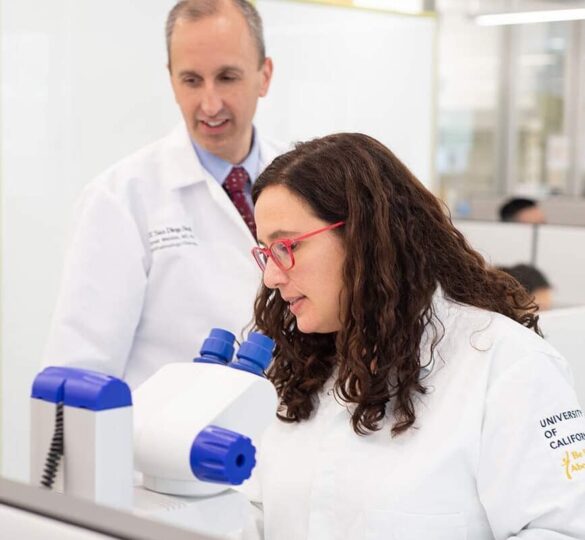Catalyst for a Cure Researchers Discover Clue to How to Protect Neurons and Encourage Their Growth
The Catalyst for a Cure researchers are a team of four principal investigators and their laboratories working together to restore vision and cure glaucoma.

Researchers in the Catalyst for a Cure (CFC3) Vision Restoration team funded by Glaucoma Research Foundation reported in a study published December 14, 2020 in PNAS (The Proceedings of the National Academy of Sciences) that by inhibiting a particular family of enzymes, it may be possible to develop new therapies for treating neurodegenerative diseases including glaucoma and Alzheimer’s.
The CFC researchers summarized the importance of the findings as follows:
In glaucoma, retinal ganglion cells and their axons in the optic nerve do not all degenerate at a common rate. Thus, at any point in progression, some cells stressed by the disease remain functional, while others have lost their axons entirely. To preserve vision, different strategies are therefore needed to protect healthy ganglion cells, repair those in early stages, and regenerate those that have lost axons and connectivity with the visual brain.
A tacit assumption has been that therapies that protect the ganglion cell projection in glaucoma should also help them regenerate – that is, protect, repair and regenerate are all part of the same category of therapy. However, this is not the case. While inhibiting some pathways protects ganglion cells, the same strategy may prevent regeneration. This is so for a pair of kinases, for example, the dual leucine zipper kinase (or DLK) and the leucine zipper-bearing Kinase (or LZK).
Finally, however, there is hope to achieve both purposes with a single therapeutic intervention. The laboratory of Dr. Derek Welsbie, in collaboration with the Catalyst for a Cure team, discovered a novel strategy that can promote both neuroprotection and regeneration of ganglion cells and their axons.
This approach is based on the inhibition of a family of molecules called GCK-IV (germinal cell kinase four) using a single drug. Importantly, the CFC team now finds that the same strategy is also effective to potentiate the survival and growth of retinal ganglion cells produced from stem cells in a dish.
This new strategy will be beneficial in both preventing ganglion cell degeneration to preserve vision and in advancing cell replacement therapies in cases where the optic nerve has degenerated entirely.
Read the UC San Diego news release here…
Posted on December 22, 2020